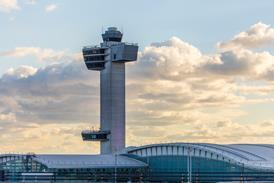Acquire a business jet in the Middle East - as in most emerging aviation regions - and you will most likely have to send your pilots for training to Europe or North America - the two traditional big markets for business aviation still dominate when it comes to simulator centres.
However, while airliner facilities have started to spring up in Asia, Latin America and the Middle East to meet surging demand for new pilots, when it comes to business aviation these regions still lack the critical mass to justify investment in full-flight simulators that must be occupied virtually 24h a day, seven days a week to pay their way.
Our first census of business aviation simulators - compiled by Flightglobal and sponsored by CAE - shows the USA still leads the way when it comes to business aviation training.
The fact is hardly surprising. Not only did the use of corporate jets start there decades before the industry began to permeate other parts of the world, but the country has had a general aviation sector and a network of flying schools that dates almost back to the Wrights. Of 294 business aircraft simulators globally, 230 - or more than 78% - are based in the USA, with a further eight in Canada.
Europe comes next, with the UK way out in front - the country has 18 business aviation simulators, according to our census, or slightly more than 6% of the global total. France has a further 12 machines, with Germany, the Netherlands, Norway and Spain hosting two each. Single simulators can be found in Austria, Finland and Portugal.
The United Arab Emirates has the most simulators of any nation outside Europe or North America, with a total of eight - Emirates CAE Flight Training in Dubai hosting all of them.
The USA still comes out on top in terms of new installations, with six simulators having entered service in 2012. That is twice as many as Europe, with only one apiece in Asia-Pacific and the Middle East.
FlightSafety International is the world’s biggest operator in terms of hardware, with 177 simulators, or more than 60% of the market. The vast majority of them are in the USA, in locations including Dallas Forth Worth, Wichita - specialising in Cessna and Hawker - and Savannah (Gulfstream).
FlightSafety also has installations in Europe, at Farnborough, UK and Le Bourget, France. CAE - the market leader in airline and military training - runs 58 business aviation simulators, more than half of them at the world’s biggest centre of its type, the former SimuFlite at Dallas Fort Worth airport, with further devices at its Emirates joint venture in Dubai.
Orlando-based SimCom is the other significant player in business aircraft simulators, with 25 devices - almost 7% of the market - most of them at its main centre in Florida. The company offers training across a range of jet and turboprop types, but with the emphasis on Cessna and Hawker.
Bombardier operates 12 machines at its Montreal training facility, focusing on its Global and Challenger families. Other business aviation devices are scattered throughout the world, with operators ranging from the Civil Aviation Flight University of China to Senasa in Madrid and Melbourne’s Ansett Aviation Training.
When it comes to manufacturers of business aviation simulators, FlightSafety is again the market leader with 181 installations; CAE is second with 73 devices. The vast majority of these are operated by these vertically integrated companies themselves.
SimCom also manufactures and uses its own machines, with 17 simulators in the market. Other brands represented among the 294 simulators in use around the world include Montreal-based Mechtronix, Illinois-based Frasca International and Opinicus of Florida, as well as a number of legacy makes.
In the Middle East, Emirates-CAE Flight Training has so far established the only business aviation training facility, although a number of competitors provide airliner simulators. The joint venture offers training to pilots of Bombardier Challengers and Globals, Dassault Falcons, larger Gulfstreams and the Hawker 750/800/900 range. It also has dedicated Airbus ACJ320 and Boeing BBJ simulators, as well as a Bell 212/412 helicopter device.
Source: Flight International























